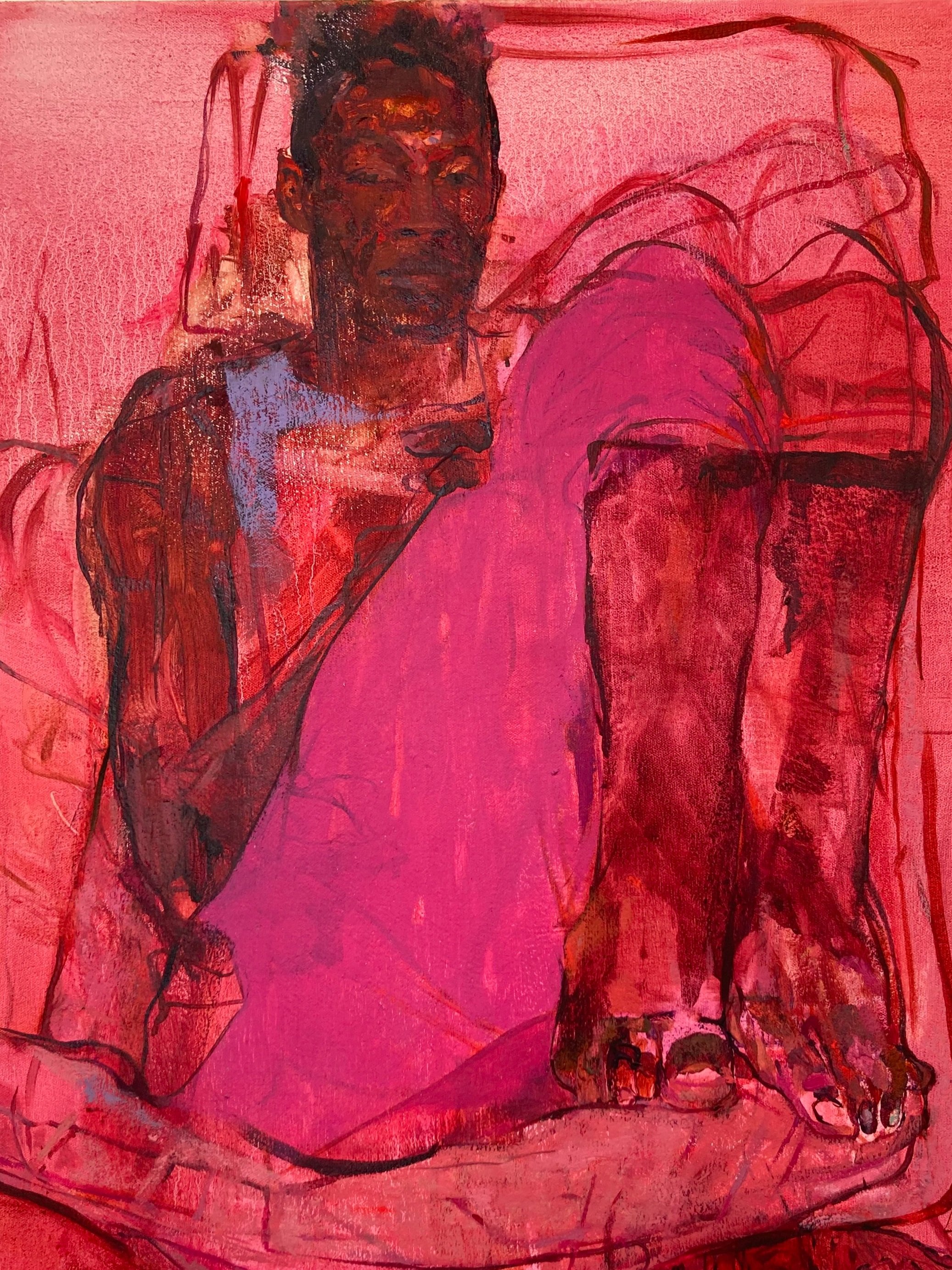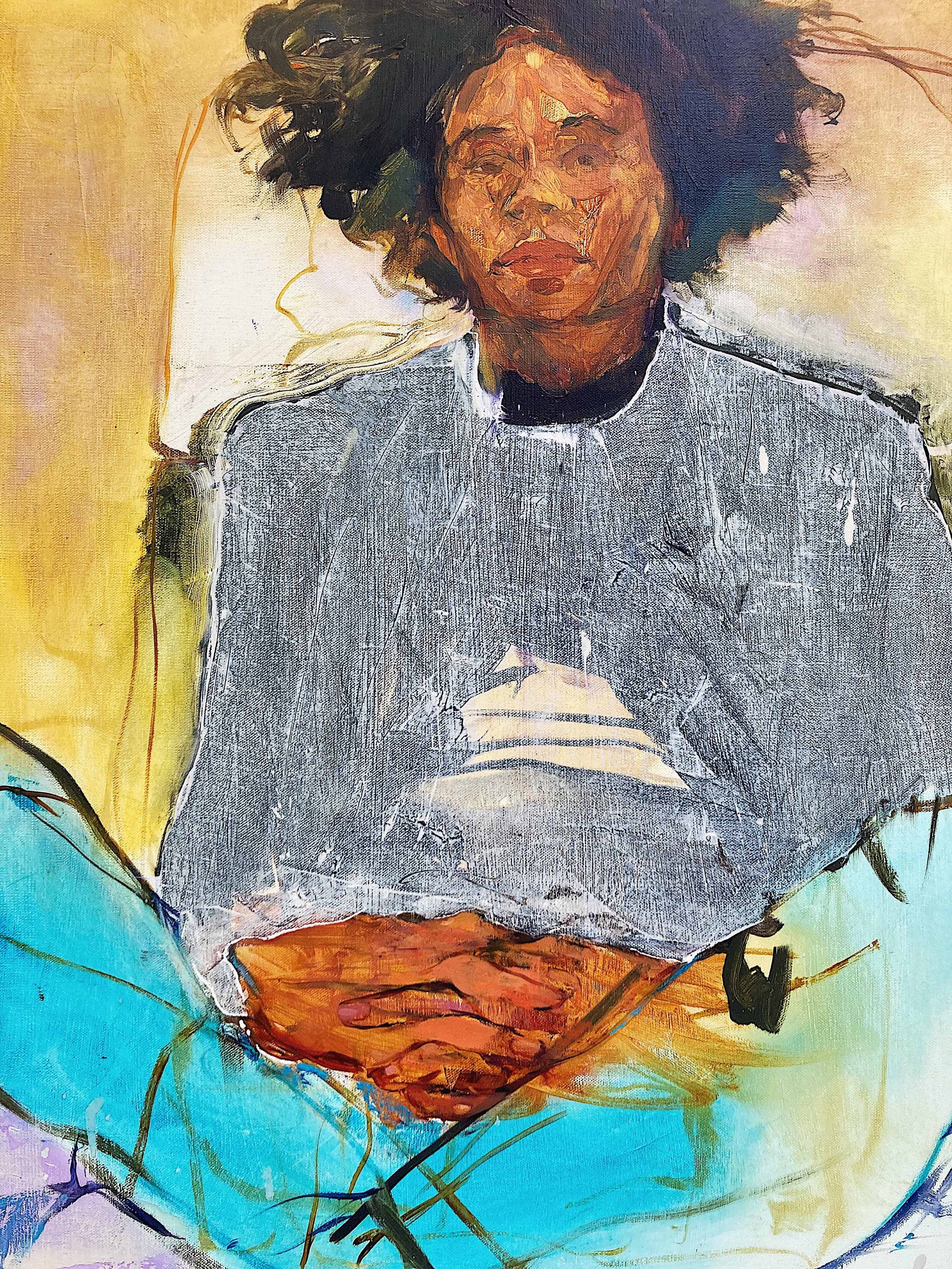“My inclination to paint, especially from life, is a completely political one. We belong here. We deserve to be seen and acknowledged in real time. We deserve to be heard and to be imaged with shameless generosity and accuracy.”
A few years ago I went to see New York based, Philly born artist Jennifer Packer’s exhibition at the Serpentine South Gallery in London. I hadn’t heard of the artist nor did I know anything about the show but had seen an image advertising it somewhere and knew I had to go. Catching it just a few days before it closed in late summer of ‘21, the show remains one of my favourites I have ever seen. Jennifer’s work is not only incredibly beautiful but deeply connected and representative of contemporary black lives in her own community, current events, and racial politics. Each painting draws you into a immersive emotional story state while mesmerising our inner artist with extraordinary her use of brush technique and colour. It left a deep impression on me. I knew this was something very special and profound. I think about it often, and so decided to finally share my experience with it, all these years later. If you would like to find out more about this exhibition and the artist click here.
LW
Jess, 2018 Oil on canvas 76.2 x 61 cm 30 x 24 inches Collection of Ursula Burns.
Close up of the deeply emotive floral still life painting that is: Say Her Name, 2017 Oil on canvas 121.9 x 101.6 cm 48 x 40 inches Private Collection. Courtesy the Artist, Corvi-Mora, London and Sikkema Jenkins & Co, New York.
“Packer has described her floral compositions of funerary bouquets and vessels of personal grief; these paintings about loss are often made in response to the tragedies of state and institutional violence against Black Americans. ”
Tia, 2017 Oil on canvas 63.5 x 99 cm, 25 x 39 inches, Collection of Joel Wachs, Photo: Matt Grubb.
Right side close up of the luscious paint strokes of blues and greens: For James III, 2013 Oil on canvas 121.9 x 182.8 cm 48 x 72 inches Private Collection. Courtesy the Artist, Corvi-Mora, London and Sikkema Jenkins & Co, New York Photo: Marcus Leith.
Bottom portrait close up of: For James III, 2013 Oil on canvas 121.9 x 182.8 cm 48 x 72 inches Private Collection. Courtesy the Artist, Corvi-Mora, London and Sikkema Jenkins & Co, New York Photo: Marcus Leith.
Close up of Untitled, 2016 Oil on canvas 61 x 61 cm 24 x 24 inches Private Collection. Courtesy the Artist and Corvi-Mora, London.
April, Restless, 2017. “For me, making a portrait of someone is wanting to do the subject justice and, if anywhere, the imagination sits in the respectful distance. It’s imagining a space that an image or representation can’t quite touch. There are parts of subjectivity that aren’t quite revealed on the surface and can’t be essentialised through drawing. Sometimes things in the paintings get collapsed, so in April, Restless (2017), I made the leg of the table that was behind her rest on her finger. It’s very slight, but I’m trying to build these metaphorical connections for how I think about these folks. There’s a give and take between representation and imagination.” Jennifer Packer 2020.
Typewriter close up from: April, Restless, 2017. (Above).
Close up of the oscilating fan in: Blessed Are Those Who Mourn (Breonna! Breonna!), Packer's mighty response to the killing of Breonna Taylor by Louisville police officers in March.
The Masterpiece that is: Blessed Are Those Who Mourn (Breonna! Breonna!) 2020. Packer's mighty response to the killing of Breonna Taylor by Louisville police officers in March and the artist’s largest painting to date at time of taking this photo of it (August 2021).
“It’s hard to counteract alienation outside of the space in which you feel alienated. But if I feel in the studio, if I come back to the question of my own life mattering, then I do feel a sense of power. I am not interested in the typical sense of hierarchy that comes with portraiture, but in the environment.. just as much as the figures that sit within it. I like that with painting you can create this other narrative which can overwrite the memories that you have. There is something really wonderful about the limitations of image making as it pertains to the subjectivity of humans.””













